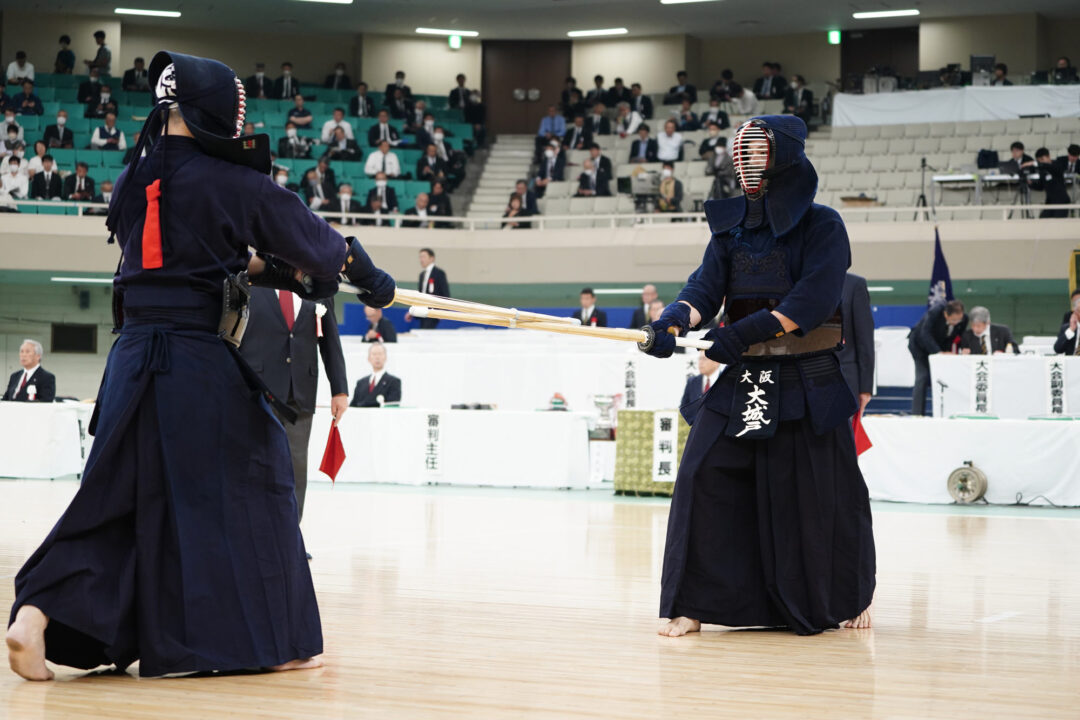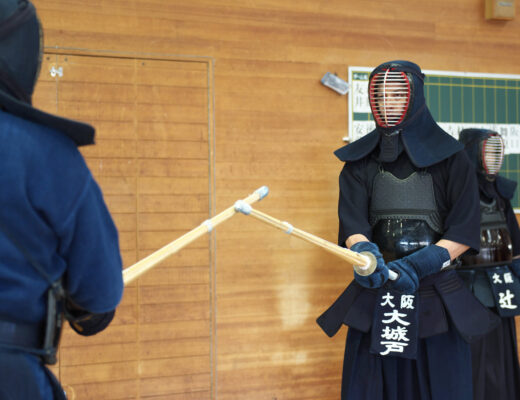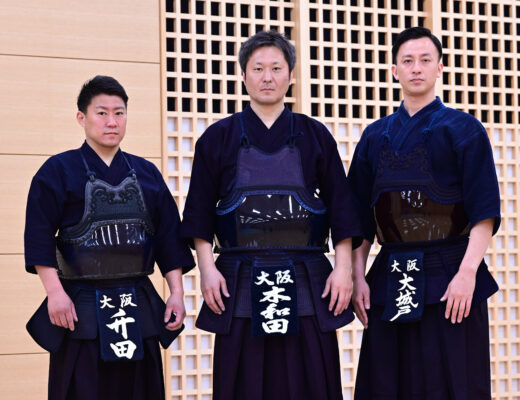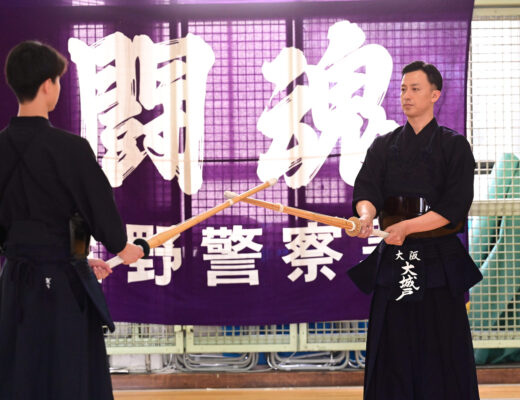2024.4 KENDOJIDAI
Composition: Teraoka Tomoyuki
Photography: Nishiguchi Kunihiko
Translation: Pepijn Boomgaard
In what was his first appearance in the All Japan Championships in a long time, Okido Satoru thrilled the audience and made it to the top eight this year. He says that the past few years he has been working on enriching himself before using techniques. “Careful groundwork before striking allows you to get ahead of the opponent without them noticing, and will create opportunities to strike.” We talked to him about the importance of the moment before striking and unnoticeably taking the lead.
Okido Satoru (Renshi 7th Dan)
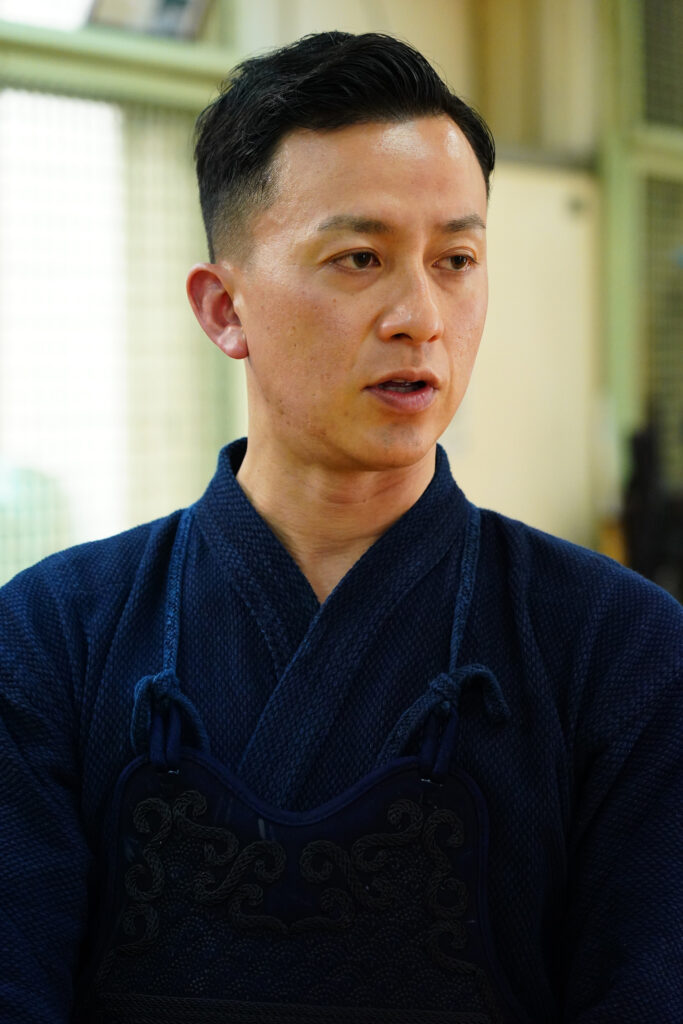
Lay the groundwork before using techniques and take the unseen initiative
In a sense, you could say that the theme of “taking the initiative” is the exact opposite of my own Kendo. It might seem like this term implies attacking first, but I try to take the initiative in a manner that cannot be seen in order not to cause a reaction. I take the initiative with my mind, so that I can respond instantly when my opponent comes forward.
My style of Kendo has not changed much since I was young. I was often told to “go first” and “take the initiative.” When I was still competing, I tried to implement this advice at times, but it didn’t suit my Kendo and it didn’t feel right to me. I wasn’t able to use my own style of Kendo, and even when I was able to score Ippon, it was often just by chance, and my performance was not stable.
As I grew older, I came to the conclusion that what I needed to emphasize in my own Kendo was the moment before striking. I have been studying this ever since. Compared to trying to score with speed and power, when I try to properly use Seme, the Maai becomes closer and the risk of getting struck increases. However, even when I do get hit, I am satisfied with myself and I feel that this has become the core of my kendo.
The key to all of this is to take the “unseen” initiative. There are various types of initiative, such as Sen Sen No Sen and Go No Sen. I particularly focus on Go No Sen.
From the moment I get up from Sonkyo, I enrich my Ki and Kamae and take the initiative. Once we reach Shokujin No Maai*, I try to extinguish my own Ki and resist the urge to strike, inviting my opponent to attack. The important thing here is that the left hand does not go up. When I was in the Tokuren, I was so scared of being hit, that when I felt in danger, I would immediately raise my hands and move towards my opponent. This might prevent the opponent from striking, but it also eliminates any opportunity for yourself to strike. By enduring this feeling and keeping your left hand in place, your opponent will not be able to hold back any longer and will make some kind of move, which I see as an opportunity to strike.
The left hand and controlling the center are important
In the moments before striking, I pay attention to the aforementioned left hand and controlling the center of my opponent.
In Kendo, we often talk about “striking the opponent’s center,” but I think that everyone has their own interpretation of where this center should be. For example, when facing a Jodan player, if you were to point your Shinai straight at your opponent’s centerline, you would be struck. This example might be a tad unrelated, but I want to make clear that there is not necessarily only one center. The position of the center changes according to the opponent’s Kendo, and I change the way I take the center accordingly. I feel like this might be more conducive to drawing out the opponent and striking at the moment of Go No Sen.
This might be a bit off topic, but during practice, I tried to fight my opponent at their own game. Kendo is a martial art that can be enjoyed by everyone, regardless of gender and age. I practice with men and women of all ages. If I impose my own Kendo on them, neither of us will get much out of the practice. I try to fight my opponent at their own game with Aiki, knowing I’m at a disadvantage. By repeatedly doing this, I have learned the situations in which I tend to be struck, and I feel that I have acquired the Seme and technique to overcome my opponent even under such circumstances. This mindset has definitely helped me with the aforementioned unseen initiative.
Increase the pressure before striking without being afraid of getting hit
When fixing the left hand and patiently taking the center, it can be said that you are taking the initiative. If the opponent can no longer hold back and moves forward, you will be in a satisfactory position, while they are not. This will inevitably lead to an opportunity to strike.
There has been tremendous progress in the techniques used in Kendo in recent years. In competition, there are situations where even though someone is strongly keeping their Kamae, an Ippon can be scored just by touching them. However, if because of this you start focusing on not being struck, you will never find an opportunity to strike yourself. That’s exactly why I’ve been valuing the moment before the strike, trying to break down my opponent without losing my own posture. What I fear the most in matches is letting my opponent perform a complete technique. I hope to learn how to use my Kensen to pressure my opponent so much that they feel like they can’t reach me, or that they will be struck if they move forward. That would be taking the initiative even if the movement itself is not visible.
There is no retirement in Kendo
Express yourself
Last year, I was able to compete in the All Japan Championship for the third time. I fought four matches at the Nippon Budokan. I’m not sure how related this is to today’s theme, but I would like to talk about my training over the past few years.
I quit the Tokuren at age 37. The first three years after this coincided with the COVID-19 pandemic, so I didn’t have the opportunity to train or compete. I can’t change the past, so as I quit the Tokuren, I decided to cherish the “now” and seek my own Kendo. I wanted to continue doing the Kendo that I love so much.
The rest of this article is only available for Kendo Jidai International subscribers!

